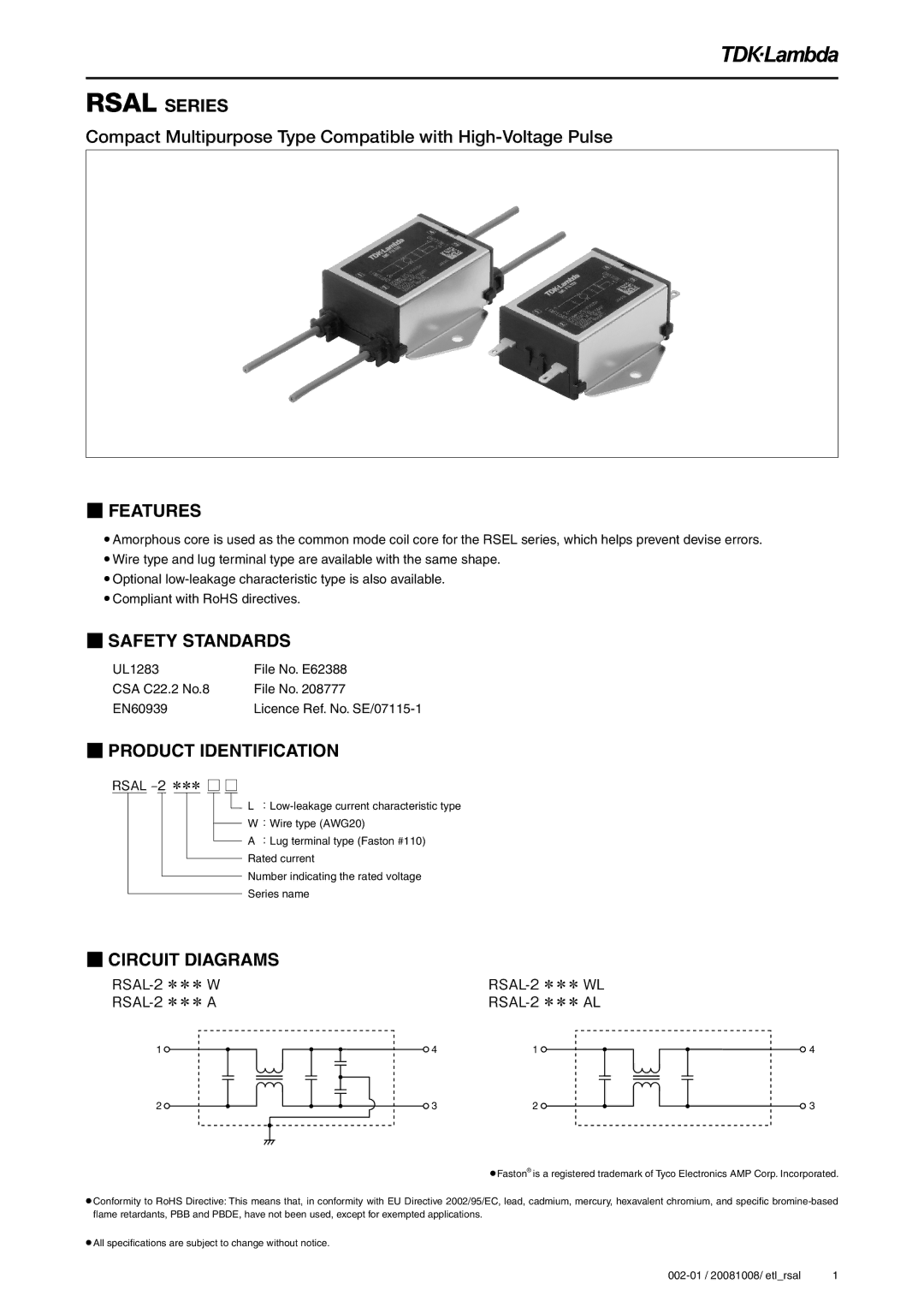RSAL-2003W, RSAL-2006W, RSAL-20R5W, RSAL-2001W, RSAL-2002W specifications
The TDK RSAL series represents a line of high-performance power inductors designed primarily for use in switch-mode power supplies and energy storage applications. This series includes several models, each with its unique specifications, but all share core characteristics that make them appealing to engineers and designers in various sectors.The RSAL-20R5W is distinguished by its high inductance value and compact size, making it ideal for applications where space is at a premium. This model is particularly favored in mobile devices and portable electronics. With a current rating that meets the demands of modern electronics, the RSAL-20R5W boasts excellent saturation performance and low DC resistance, ensuring efficient energy conversion and minimal heat generation.
The RSAL-2003W offers enhanced thermal performance due to its advanced core material. This model is specifically designed for higher current applications, making it suitable for industrial power supplies and automotive applications. Its robust construction allows it to withstand the rigorous operational conditions often found in these environments, ensuring long-term reliability and performance.
Next in the series, the RSAL-2002W combines versatility and high efficiency. This model is engineered for a broad range of applications, from consumer electronics to telecommunications. With a focus on minimizing core losses, the RSAL-2002W is ideal for energy-efficient designs, and its ideal impedance characteristics can significantly enhance system performance.
The RSAL-2001W model focuses on delivering maximum performance in compact form factors. This inductor is designed for high-frequency applications where efficient energy storage and transfer are crucial. The RSAL-2001W features a low self-resonance frequency allowing it to maintain stability during dynamic load conditions, thus ensuring consistent performance.
Finally, the RSAL-2006W stands out with its extended operating temperature range and high saturation current capabilities. This inductor is tailored for automotive applications, where temperature fluctuations are common. Its design maximizes both thermal efficiency and mechanical stability, contributing to its reliability in harsh environments.
Collectively, the TDK RSAL series exemplifies modern inductor technology, combining efficiency, reliability, and performance. These inductors are vital for powering the next generation of electronic devices, providing solutions that cater to increasingly sophisticated technological demands. Their advanced features and robust designs make them an asset for engineers looking to enhance the efficiency and performance of their power systems.

